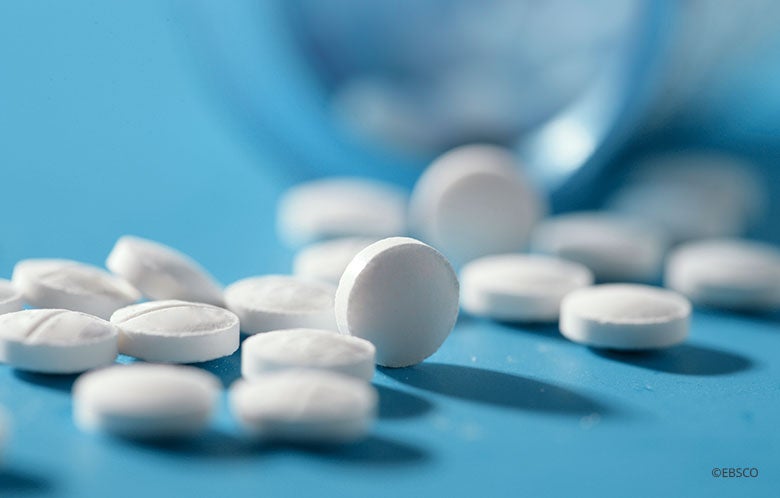The United States Preventive Task Force (USPSTF) recently updated its recommendations regarding the use of aspirin for primary prevention of cardiovascular disease (CVD). After reviewing a USPSTF-commissioned systematic review and microsimulation study, the committee put forth a Grade C recommendation to individualize the decision to initiate low-dose aspirin in people 40-59 years old with at least a 10 percent 10-year risk of CVD. They went on to offer a Grade D recommendation against initiating aspirin for primary prevention in those older than 60. If you are scratching your head about how to individualize this decision for your patients, you aren’t alone. Here are five practice points that might help you navigate this conversation with your patients.
1. Who is likely to benefit from starting aspirin for primary prevention of CVD?
It might be easier to start with who is unlikely to see a net benefit from initiating aspirin: people under 40, over 60, and anyone in between with a 10-year CVD risk less than 10 percent. So that leaves a potential benefit for those aged 40-59 years with a 10-year risk of CVD of at least 10 percent without risk factors for bleeding. Factors that increase bleeding risk include history of gastrointestinal ulcers, recent bleeding, and use of medications that increase bleeding risk.
2. How is 10-year CVD risk measured?
Estimating 10-year risk of CVD is critical to individualizing the decision whether to initiate aspirin. The USPSTF (and the American Heart Association [AHA] and American College of Cardiology [ACC]) recommend using the ACC/AHA Pooled Cohort Equations. This calculator considers age, cholesterol levels, systolic blood pressure level, antihypertension treatment, presence of diabetes, smoking status, sex, and race. (The USPSTF does acknowledge that race is a social construct and its use may contribute to racial disparities in care.) We must also acknowledge that while this calculator is the only U.S.-based tool that has been externally validated in multiple populations, it has consistently been shown to overestimate risk. That means using this calculator as a sole method of determining whether someone needs aspirin (or a statin) will result in overuse of these medications and additional harm without the possibility of benefit in some small but not insignificant number of people. The USPSTF thus recommends utilizing this calculator together with other information to fully inform the decision about whether to start aspirin.
3. What kind of benefit might patients expect?
A small one. Pooled analyses demonstrated small but significant reductions in nonfatal myocardial infarction and nonfatal ischemic stroke but no reduction in cardiovascular mortality or all-cause mortality (at 3.6 to 10.1 years of follow up). These data were then combined with data on harms from major bleeding events associated with daily aspirin use in a microsimulation study to estimate the expected net magnitude of benefit in different scenarios varying by age, CVD risk, timing of initiating aspirin, sex, etc.
From a population perspective, the highest possible net benefit would be expected in a man with a CVD risk of 20 percent who starts aspirin at age 40-49. In this scenario, the quality-adjusted life years (QALYs) gained is estimated at 66 per 1,000 persons, which comes out to about eight additional months of quality life. Women tend to see a lower magnitude of benefit. In this same scenario, the estimated benefit for a woman is less than three months of QALYs gained. The estimated net benefit decreases the later aspirin is initiated until it becomes a net harm, which in this analysis happened at an initiation age of 60.
While the benefit for reduction of nonfatal cardiovascular events with aspirin is small (and only net positive for those 40-59 years old with 10-year CVD risk of at least 10 percent), the cardiovascular benefit seems to increase the longer aspirin is taken and the greater the 10-year CVD risk, which is heavily influenced by age. The problem is that bleeding risk also increases the longer aspirin is taken. One last thing to note is that while the magnitude of cardiovascular benefit of aspirin seems to accrue over time, the potential harm due to increased risk of bleeding starts right away.
4. What dose of aspirin is recommended?
That’s an easy one: 81 mg daily. The cardiovascular benefits of aspirin seem similar for all doses that have been studied in trials (50-500 mg daily). So just stick with what’s available over the counter, which is most commonly 81 mg.
5. If you do start aspirin, when should you stop?
Probably around age 75. It should come as no surprise that the net benefits of aspirin for primary prevention seem to follow a U-shaped curve. That is, while the net benefits of aspirin for CVD prevention accrue over time, so does bleeding risk from aspirin, and at some point the risk starts to outweigh the benefit.
It is worth noting that the benefits of continuing aspirin in a person in their 60s or 70s is not the same as starting it in someone in their 60s or 70s. The USPSTF offered a Grade D recommendation against starting aspirin in people over 60. This is due to the evidence that the cardiovascular benefits of aspirin accrue over time and are more pronounced for those with higher 10-year CVD risk. For example, someone who had a CVD risk of 13 percent when they were 42 years old is at higher lifetime risk of CVD (and more likely to benefit from aspirin) than someone who reaches a CVD risk of 13 percent at age 65.
So what exactly do you say to your patients about aspirin, then?
For patients over 60 not already taking aspirin, don’t recommend starting it for primary prevention. Since the benefits and harms accrue over time, the window for net positive effect has passed.
For patients 40-59 years old with a 10-year CVD risk less than 10 percent, congratulate them and tell them that they aren’t likely to benefit from aspirin at this time and that you will bring it up again next year when their CVD risk is likely to be higher.
For patients 40-59 years old with a 10-year CVD risk of at least 10 percent without risk factors for bleeding, start by asking if they are willing to take a(nother) pill every day for the next couple decades if it would offer some benefit. Any net positive effect will only occur if they take it. Then walk them through the expected magnitude of benefit - likely a few months of improved quality of life and lower risk of nonfatal heart attack or stroke that accrues over many years of taking aspirin. Then explain that with this potential benefit comes an increased risk of a major GI bleed or intracranial bleed, a risk that starts right away.
After this kind of honest discussion, most patients are likely to find themselves in one of two camps: those called to act for any possibility of benefit and those who wish to first do no harm. For a specific subset of people and for a specific subset of time, daily low-dose aspirin offers a small reduction in nonfatal MI or nonfatal stroke in exchange for a slightly smaller increased risk of a major bleed.



